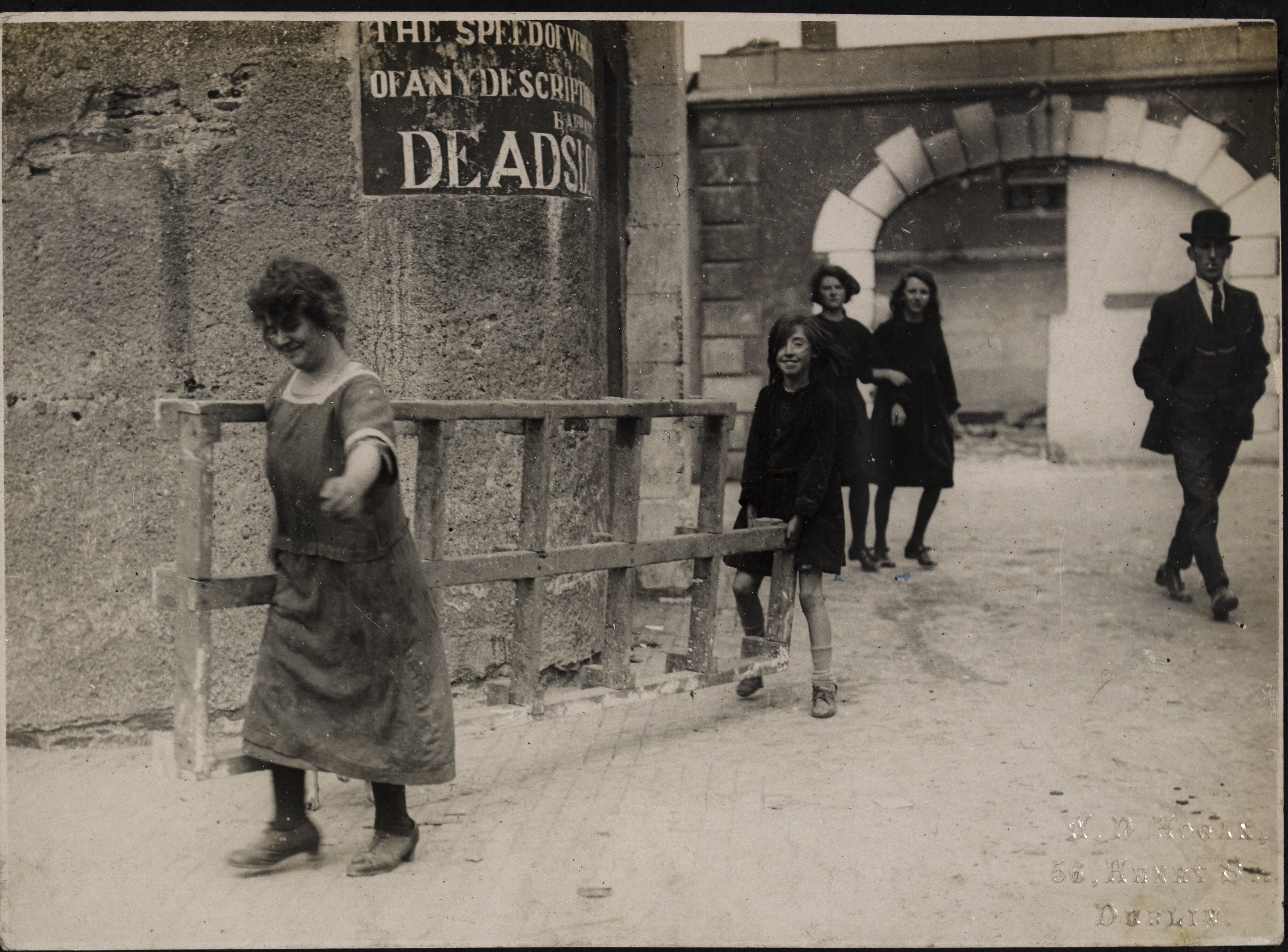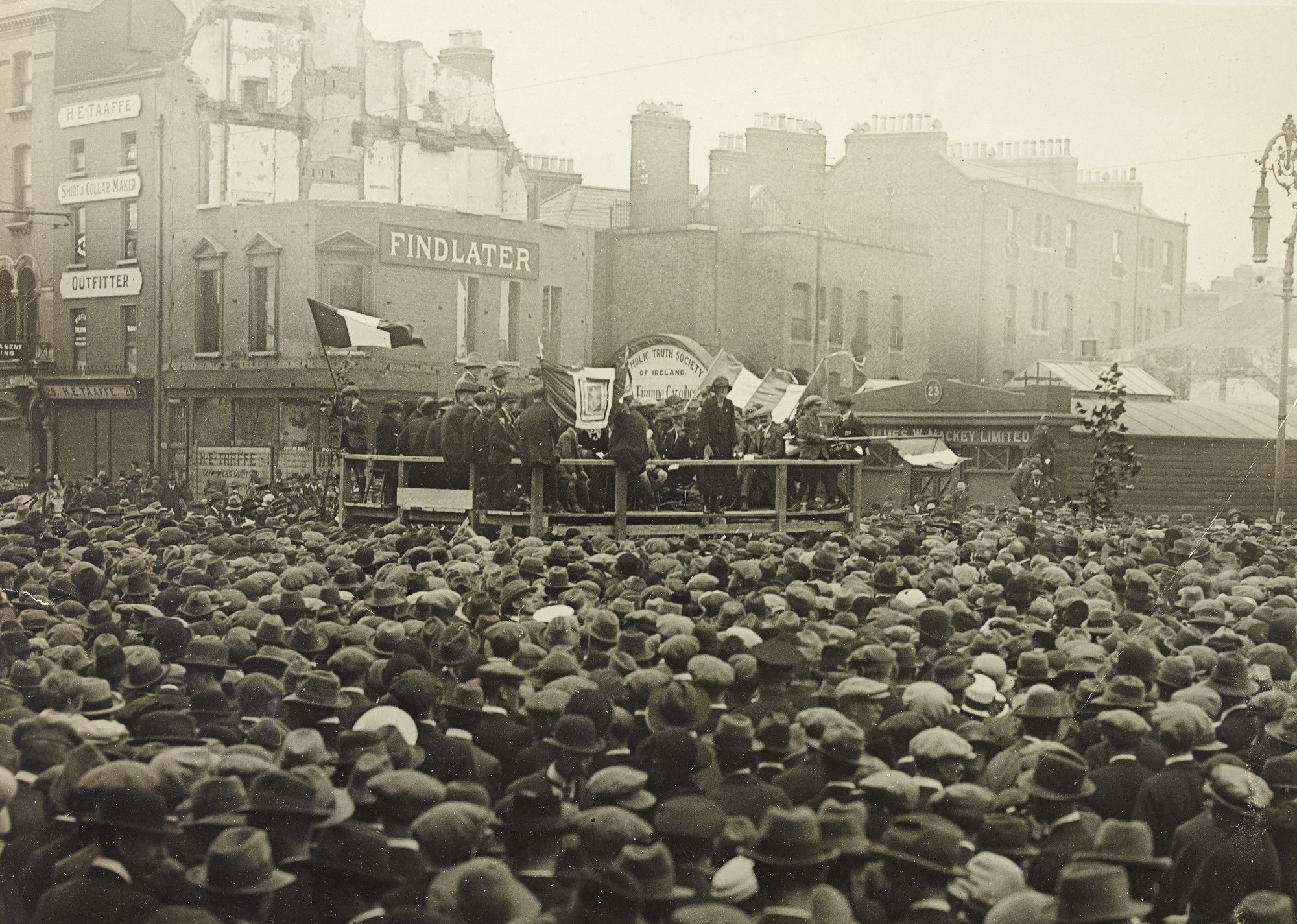Women and the Irish Civil War, 1922-1923
As UCC hosts the National Civil War Conference, Professor Lindsey Earner-Byrne, School of History, reflects on the role and representation of women during this pivotal moment in Irish history.

In recent years a dizzying amount of new research has been carried out on the Irish Civil War (1922–1923). In part this is a product of the passage of time, but it is also because of the emergence of an ever-growing amount of source material, much of it digitised, and historians’ changing approach to those sources. The Bureau of Military History material and the Military Service Pensions Collection, for example, are incredibly rich sources, available online. Comprising thousands of documents and files relating to people’s activity during the revolutionary period and to subsequent claims for pensions or allowances, they are being used with imaginative effect by several scholars. In particular, much of this material offers us a much better understanding of women’s role in the conflict.
The Free State was not two months old when in February 1923 the Catholic hierarchy used the pulpit to assert the democratic legitimacy of that State and condemn the men and women of violence. Cardinal Michael Logue, Archbishop of Armagh and Catholic Primate of all Ireland, railed against the perversion of the true order of things which had resulted in schoolboys touting guns, devout and brave men turning to crime and butchery, and ‘worse still, a number of young women and girls … involved in this wild orgy of violence and destruction, if not as active agents, at least as abettors and fomenters of strife’. What, he asked, was the future of Irish motherhood if this behaviour spread? While this rhetoric has largely been characterised as part of a post-war moral panic, it was in essence a way of articulating a fear of social chaos – if men and women failed to behave as God ordained, the future was quite literally unimaginable.
This fear of women was a direct response to their visibility on the anti-treaty side of the Civil War divide. The most public of these women were the widows of the revolution, who almost universally declared against any such compromise. However, what is often less noted is the number of them that sought desperately to find a compromise, for example Maud Gonne MacBride’s Women’s Peace Committee. Instead, it was Mary MacSwiney’s 160-page, 15,000-word speech, delivered during the Treaty debates of December 1921, which is recalled and held up as an example of these women’s uncompromising stance. While MacSwiney was a dedicated republican in her own right, it was her status as the sister of Terence MacSwiney, who had died as a result of hunger strike in 1920, which shaped history’s response to her case against the Treaty. She, and almost all the other women, were characterised as ventriloquists speaking for the dead. As UCC’s John Borgonovo pointed out in a recent RTÉ documentary, Forgotten: Widows of the Revolution, ‘it was a neat political trick’ to turn the thing that had given these women such legitimacy in the political sphere – connection to the dead of the revolution – into their greatest weakness. Key figures on the pro-treaty side characterised them as overly emotional, volatile and even dangerous because of their grief.

While P.S. O’Hegarty’s description of the women in his influential 1924 book The Victory of Sinn Féin as ‘the Furies’ and ‘arid begetters of violence’ is the most often-cited example of this characterisation of women republicans, he was by no means alone. On the same day that Cardinal Logue had worried his flock about Irish motherhood, the Most Rev. Dr Bernard Coyne had zoned in on these ‘half-crazed, hysterical women’, who were undermining the authority of the bishops and priests and assisting ‘in the slaughter of some of the best and bravest of Ireland’s sons'.
In truth this fear regarding women’s role in society, exacerbated by the years of conflict, had been evolving since the early days of the suffrage campaigns in the 1870s. Characterising the women engaged in the Civil War as unstable did important work in denying them any political agency and effectively undermining the idea of women as capable of any independent political consciousness. While delegitimising female political convictions, this discourse also framed women who articulated such political convictions as responsible for murder and social chaos.
For those Irish women politicised and/or radicalised by their involvement in the revolution, and particularly for those who refused to recognise the political legitimacy of the new state, the Irish Free State represented a backward step. However, as these same women knew from first-hand experience, the ink had barely dried on the 1916 Proclamation of the Republic’s guarantee of ‘equal rights and equal opportunities to all its citizens’, than their male allies were equivocating. By the 1917 Sinn Féin Convention nationalist women had to organise in order to insist on representation at executive level and even that was given begrudgingly.
While the 1922 Constitution of the Irish Free State honoured the commitment to equal suffrage, it did not prove effective at preventing the enactment of legislation in the 1920s and '30s which openly discriminated against women and reduced the horizon of their citizenship. So many women, disaffected by the new state, disappeared from sight, submerged by the struggle to survive or dispatched on emigrant ships.
UCC is honoured to be hosting the National Civil War Conference this June (15 - 18) which brings together key scholars working on multiple aspects of the Irish Civil War and its legacy. Visit the official website for more information.
Photography: provided by The National Library of Ireland



